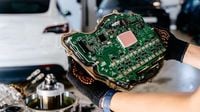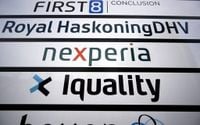For months, a behind-the-scenes power struggle over the Dutch semiconductor maker Nexperia has sent shockwaves through the global automotive industry, threatening car production and exposing the fragility of international supply chains. But in a series of rapid-fire developments over the weekend of November 9-10, 2025, the crisis appears to be inching toward a resolution, as China restarted some exports of Nexperia chips and both Dutch and Chinese officials prepared for high-stakes negotiations in Beijing.
The saga began in mid-October, when the Dutch government invoked a rarely-used World War II-era law to take control of Nexperia, a company headquartered in Nijmegen and owned by China’s Wingtech Technology Co. Dutch officials cited national security concerns and what they described as “serious governance shortcomings,” according to Design Development Today. The government’s intervention was aimed at preventing the loss of crucial technological know-how and intellectual property, which they feared could threaten Europe’s economic security. The move was also influenced by pressure from American officials, who reportedly told their Dutch counterparts that Nexperia’s Chinese CEO, Zhang Xuezheng, would have to be replaced to avoid further trade restrictions. A Dutch court subsequently granted the ministry’s request to oust Zhang.
Nexperia, though not a household name, is a linchpin in the automotive supply chain. The company produces so-called discrete semiconductors—simple chips that perform single functions such as switching, logic, and power management. These chips are found in everything from adaptive LED headlight controllers and electric vehicle battery systems to anti-lock brakes and climate control units. S&P Global Mobility analysts noted that while Nexperia accounts for only about 5% of the automotive silicon discrete market by revenue, its share is much higher in terms of chip volume; a single car can contain dozens or even hundreds of these components.
The company’s global operations reflect its importance: wafer fabrication plants in Britain and Germany, and assembly and testing centers in China’s Guangdong province (which alone accounts for around 70% of Nexperia’s end-product capacity), as well as in the Philippines and Malaysia. Nexperia’s chips are manufactured in Europe, sent to China for finishing, and then re-exported to clients around the world.
The Dutch government’s intervention, however, triggered swift retaliation from Beijing. China’s Ministry of Commerce banned the re-export of Nexperia chips from its Dongguan plant, blaming the Netherlands for “turmoil and chaos” in the semiconductor supply chain. The move sent a chill through the global auto industry, with automakers such as Volkswagen, Honda, Ford, General Motors, Nissan, and Mercedes-Benz all warning of potential production stoppages. Honda even halted production at a Mexican plant that makes its popular HR-V crossover for North American markets, while Volkswagen and other manufacturers began using reserve stockpiles and bracing for assembly line disruptions.
“It’s an industrywide issue. A quick breakthrough is really necessary to avoid fourth quarter production losses for the entire industry,” Ford CEO Jim Farley said, as reported by Design Development Today. Nissan CEO Ivan Espinosa told CNBC that his company set aside a 25 billion yen ($163 million) provision to absorb the impact of the Nexperia crisis. Mercedes-Benz CEO Ola Kallenius described his company as “scurrying around the world to look for alternatives.”
The dispute also highlighted Europe’s precarious position in the broader geopolitical contest between the United States and China for technological supremacy. Last year, Washington placed Wingtech on its “entity list,” subjecting it to export controls over national security concerns. In September 2025, the U.S. expanded that list to include Nexperia, pressuring allies to follow suit. The Dutch government’s move to seize control of Nexperia was seen by many as a response to this transatlantic pressure.
Yet, amid the escalating standoff, a glimmer of hope emerged after a high-profile meeting between U.S. President Donald Trump and Chinese President Xi Jinping. As part of a trade truce, Beijing agreed to ease the export ban on Nexperia chips, provided they were used for civilian purposes only. On November 9, China’s Ministry of Commerce announced it would allow the immediate shipment of compliant Nexperia components, a decision confirmed by the European Commission the following day.
“Exports are allowed only for chips used for civilian purposes, effective immediately,” EU trade chief Maros Sefcovic stated, emphasizing that talks would continue “on finding a lasting, stable, predictable framework that ensures the full restoration of semiconductor flows.” The Chinese ministry also agreed to a Dutch request to send representatives to China for further consultations. The Netherlands, for its part, hinted it may lift restrictions on Nexperia if EU-mediated negotiations succeed.
The partial resumption of exports provided immediate relief to global automakers. Honda, for example, said it had received word that shipments from China had resumed and expected to restart production at its Celaya, Mexico plant during the week of November 21. Meanwhile, shares of Wingtech Technology, Nexperia’s parent company, surged as much as 6.4% in Shanghai on November 10, reaching their highest level since September.
Despite these positive signs, the crisis exposed underlying vulnerabilities in the global chip supply chain. Nexperia’s Chinese unit suspended shipments of wafers to its own factory starting October 13, citing payment disputes and concerns about product quality. The company’s head office, meanwhile, accused its Chinese subsidiary of “ignoring the lawful instructions” from global management, warning it could not guarantee the quality of chips delivered from the China plant since mid-October.
Industry leaders and EU officials remain cautious. Talks between Dutch and Chinese officials are scheduled to continue in China, with both sides seeking a “lasting, stable, predictable framework” to ensure semiconductor supply flows are fully restored. The European Automobile Manufacturers’ Association warned that members including BMW, Renault, Volkswagen, and Volvo had been forced to dip into emergency reserves and could face assembly line stoppages if supplies run out. Smaller firms, too, have reportedly prepared to cut working hours as a precaution.
For now, automakers and policymakers are watching closely, hoping that the latest diplomatic overtures will lead to a durable solution. The Nexperia saga has underscored not only the strategic importance of seemingly mundane electronic components but also the complex web of economic, political, and technological interests that underpin the global economy. As the world waits for a definitive resolution, the lessons of this crisis are likely to reverberate far beyond the semiconductor sector.
The stakes could hardly be higher: with each side weighing national security, economic stability, and the demands of a rapidly electrifying auto industry, the outcome of the Nexperia dispute may well shape the contours of global technology trade for years to come.


